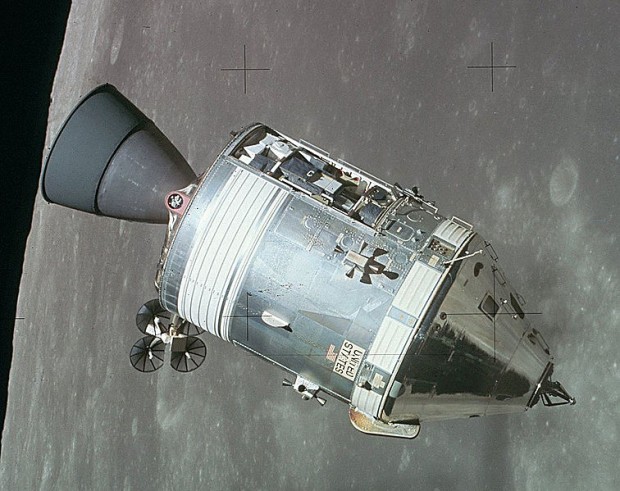
… [T]he “first constraint” on the crew’s endurance would be depletion of the CSM’s supply of lithium hydroxide (LiOH) canisters. These were used in pairs to remove carbon dioxide exhaled by the crew from the CSM’s pure oxygen atmosphere. On Apollo 8, the crew had traded a saturated LiOH canister for a fresh one every 12 hours, thus using two per day. The Bellcomm engineers calculated that, at that rate, the crew would use up the last of the 16 LiOH canisters launched on board the CSM 96 hours after TEI (trans-Earth orbital insertion) failure. They would then grow drowsy and become unconscious as carbon dioxide built up in the crew cabin. Had TEI failed on Apollo 8, the crew would probably have suffocated on December 29.
�from “Stranded in Lunar Orbit (1968),” David Portree’s post about a report engineers prepared describing what would happen if the Apollo spacecraft’s non-redundant rocket motor malfunctioned and failed to propel the Apollo spacecraft on its return journey from the Moon. Without a successful burn, the Apollo astronauts would have been trapped in lunar orbit; the engineers’ job was to describe what would happen next. Completed at the end of December 1968, two days after the return of Apollo 8, the report would be consulted during the Apollo 13 debacle and during a brief Command Module malfunction during the penultimate Apollo mission, 16, in 1972.
I’m a big fan of Portree’s blog, Beyond Apollo, which consists of thorough, elegantly-written posts about Apollo-era space projects that never were�putative missions, from extended lunar science missions to manned missions to Mars, which never got past planning at NASA and other space agencies. Portree is a librarian at the US Geological Survey’s Astrogeology Science Center in Flagstaff, AZ, if I read his profile right; at Beyond Apollo he documents a fascinating, small, nearly-accidental sub-genre of necessary science fiction.
 Gearfuse Technology, Science, Culture & More
Gearfuse Technology, Science, Culture & More


